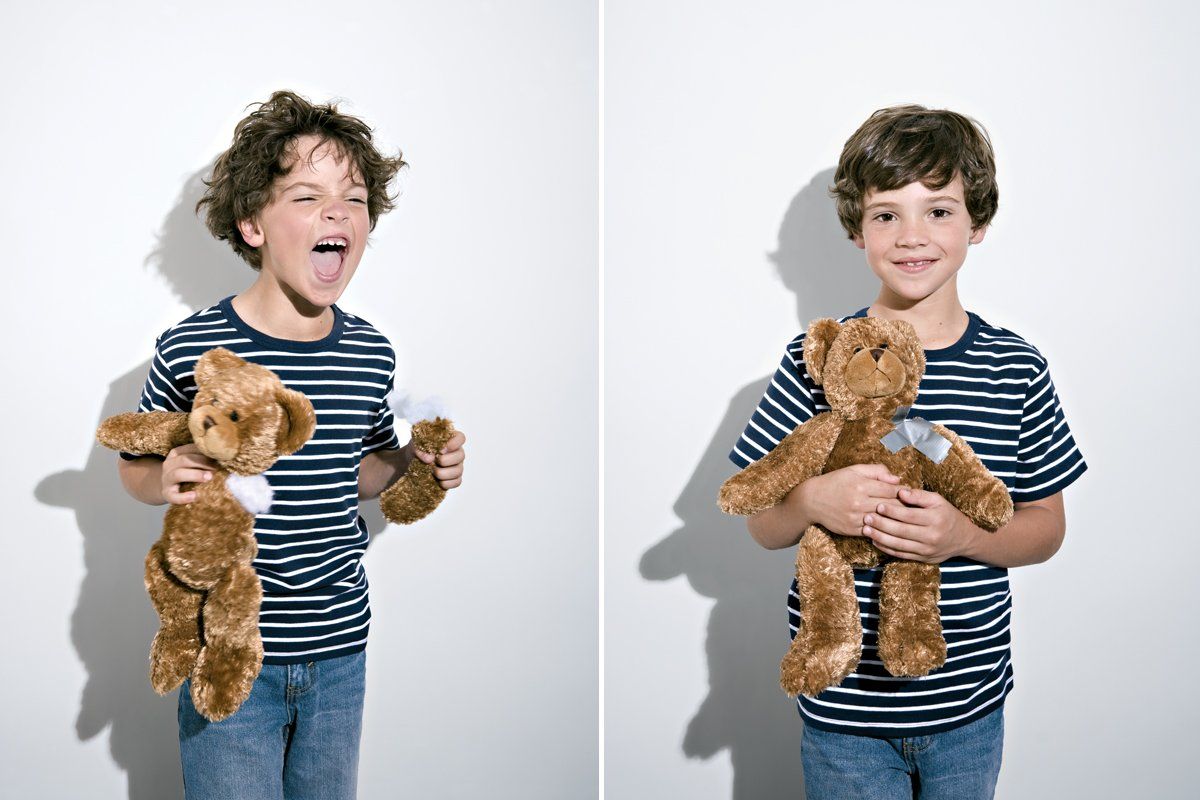
In the autumn of 1994, a novel idea was afoot in my profession. At the annual conference of the American Academy of Child and Adolescent Psychiatry, I attended a workshop on bipolar disorder in children. About 10 of us attended the meeting, held in a small, poorly lit room. Only one or two doctors reported having actually seen a child with bipolar disorder, but we all agreed to keep our eyes open for other sightings.
Three years later I attended another session about bipolar disorder in children at the academy's annual meeting. In a large ballroom beneath a gleaming chandelier, several hundred child psychiatrists buzzed with excitement. As a mainstream concept, the diagnosis had arrived.
I have been a child psychiatrist for nearly five decades and have seen diagnostic fads come and go. But I have never witnessed anything like the tidal wave of unwarranted enthusiasm for the diagnosis of bipolar disorder in children that now engulfs the public and the profession. Before 1995, bipolar disorder, once known as manic-depressive illness, was rarely diagnosed in children; today nearly one third of all children and adolescents discharged from child psychiatric hospitals are diagnosed with the disorder and medicated accordingly. The rise of outpatient office visits for children and adolescents with bipolar disorder increased 40-fold from 20,000 in 1994–95 to 800,000 in 2002–03. A Harvard child-psychiatry group led by Dr. Joseph Biederman, a prominent supporter of the diagnosis, recently insisted, "Juvenile bipolar disorder is a serious illness that is estimated to affect approximately 1 percent to 4 percent of children."
I believe, to the contrary, that there is no scientific evidence to support the belief that bipolar disorder surfaces in childhood. In fact, the opposite seems to be the case: the evidence against the existence of pediatric bipolar disorder is so strong that it's difficult to imagine how it has gained the endorsement of anyone in the scientific community. And the effect of this trendy thinking can have devastating consequences. Such children are regularly prescribed medications that are not effective in kids and have unwelcome side effects.
The case of Rebecca Riley, a Boston toddler, vividly summarizes some of the inherent risks. Her psychiatrist first identified Rebecca as suffering from pediatric bipolar disorder at the age of 2. (The psychiatrist concluded that Rebecca's two siblings were bipolar as well.) In addition to diverting the psychiatrist from the very real problem in Rebecca's family—a well-chronicled history of child abuse—the diagnosis led to the prescription of a common cocktail of medications. Rebecca's parents misused one of these medications—clonidine, prescribed to treat high blood pressure in adults but also given to children because of its sedative effects—to quiet their child. Forever. "There was no waking her up," Rebecca's mother stated on 60 Minutes. (The psychiatrist later settled a malpractice suit for $2.5 million.)
In adults, bipolar disorder is characterized by cycles in which a patient rotates between two extremes, or poles, of feeling: depression and mania. The cycles may vary in length and intensity, but the adult diagnosis depends on clear-cut episodes of behavior that is distinctively different from normal: severe overexcitement or highs that last for weeks, and crushing, painful periods of deep depression that also last for weeks or months. The description of childhood bipolar disorder by its advocates is dramatically different. Where adult bipolar disorder expresses itself in episodic, out-of-character behavior, a child diagnosed with bipolar disorder will have symptoms that characterize the child's typical behavior. In this telling, an elementary-school-age child with the disorder may be chronically enraged and have several tantrums per day. But this only points to another problem with the diagnosis: it's nearly impossible to distinguish between children alleged to have bipolar disorder and those with straightforward anger-control issues. The symptoms may look like mania: irritability, distractibility, and talkativeness. But most of these symptoms can easily be matched to less-trendy conditions like attention-deficit/hyperactivity disorder (ADHD) and oppositional defiant disorder (ODD). My view is that a diagnosis of bipolar disorder in a child is almost always a case of severe ADHD combined with severe ODD, both fairly common in elementary-school children.
Nowhere is the shaky science behind childhood bipolar disorder more evident than in the evaluation and treatment of preschoolers. The leading scholar of bipolar disorder in small children is Dr. Joan Luby of Washington University in St. Louis. In a series of studies, Luby reported that preschool children who exhibited grandiosity, elation, and interest in sexual behavior were likely to have bipolar disorder. Most child psychiatrists, including me, would be challenged to weigh the meaning of such behaviors in preschoolers. What's more, several of Luby's studies relied entirely on the reports of the children's parents. This made her assessment medically incomplete, a failure that counts even more because she was proposing a disorder that hadn't been described previously in the psychiatric literature.
There is a reason it had not been described. Psychiatry, like all branches of medicine, is expected to be grounded in science. In the U.S., however, popular culture has had an outsize influence on psychiatry. Diagnostic rates rise and fall depending on our view of a particular illness at a particular point in time—consider "hysteria" in the 19th century, or, more recently, the phenomenon of "repressed memory."
In this latest case, the popular debut of a medical disorder began with the publication of a book, The Bipolar Child, by Dr. Demitri Papolos and Janice Papolos, a husband-and-wife team. As part of the book's promotion, the authors were featured on the show 20/20. Within 30 minutes of the segment's airing, 20/20 received more than 6,000 emails. Shortly thereafter, the authors appeared on Oprah and eventually sold more than 200,000 copies of their book.
The description of pediatric bipolar disorder put forth in The Bipolar Child bears slight resemblance to the real thing in adults. The book includes a parent questionnaire that lists 65 "symptoms," most of them completely unrelated to bipolar disorder. A typical symptom that characterizes the book's indifference to established diagnostic criteria is that bipolar-disordered kids, who "seem like magical children," in the authors' words, have difficulty waking up in the morning. Lots of children have trouble waking up in the morning; this has no bearing on whether they have bipolar disorder.
A variation on the self-help theme appears in books written for parents to read to young children carrying the diagnosis. Consider Brandon and the Bipolar Bear: A Story for Children With Bipolar Disorder. It tells the story of a day in the life of Brandon, a young boy who is put to bed but then asks for a glass of water. He feels somewhat frightened and becomes tearful when left alone to fall asleep. Upon awakening, Brandon has a temper tantrum because he doesn't want to get out of bed. During the tantrum he tears off the arm of his beloved teddy bear. He is crushed by his destruction of his teddy bear but is greatly relieved when his mother offers to fix its arm. He becomes excited and bounces up and down on his bed. He goes to see Dr. Samuel, who tells him he has bipolar disorder. None of Brandon's behaviors, taken alone or even together, qualify as symptoms of bipolar disorder. Dr. Samuel medicates him anyway.
When a child is misdiagnosed with pediatric bipolar disorder—as in the case of Rebecca Riley—he or she will likely be given dangerous adult medications with no known effectiveness for children and plenty of known dangers. One of these is the powerful drug valproate, a medication for seizure disorders, which has proved useful as a "mood stabilizer" in the treatment of bipolar adults but has yielded anything but clear results in children. The side effects can include fatal damage to the liver, pancreas, and brain, as well as the masculinization of female patients.
Because these children are being treated for what they don't have, they often don't get treated for what they do have. An estimated 60 to 90 percent of children who have been diagnosed with bipolar disorder are also diagnosed with ADHD. It has been demonstrated for decades that, dosed correctly, 80 percent of children with ADHD respond favorably and safely to stimulant medication. Yet those who champion the cause of bipolar disorder in children often caution against the treatment of ADHD. With no good evidence to buttress their case, they have insisted that ADHD medication will aggravate the patient's manic state and lead to a drastic worsening of bipolar disorder. As a result, the one class of medication that is helpful is often withheld.
I realized this when I met Alexis, a brilliant 11-year-old girl from a prominent family. She was a talented artist who spent her sessions with me crafting elaborate Renaissance-like drawings and discussing her rehearsals in an adult Shakespearean troupe. Alexis, however, had always performed poorly at school, refusing to participate in the classroom and opting instead to chat with the adults in the teachers' lounge. Her constant urge to move, her refusal to do her homework—these suggested evidence of ADHD. Yet her parents, having been told that she had a far more serious (and lofty) disorder, resisted the diagnosis. When they reluctantly allowed me to stop her mood stabilizers and instead prescribe stimulant medication for ADHD, this talented child quickly became a well-functioning girl who participated eagerly and happily in class with her peers. Her parents canceled their plans to dispatch her to a boarding school for the emotionally disabled.
Once the medical establishment started buying into the idea of bipolar kids in the 1990s, the diagnosis gained unusual force. In 2000 the National Institute of Mental Health convened a roundtable of researchers in pediatric bipolar disorder and financially supported several controversial propositions, including the practice of asking bipolar adults to date the origins of their own disease. The creation of a new source of funding generated frenetic activity among university psychiatrists, and in a twinkling it created stakeholders in the diagnosis.
Big Pharma viewed the development of this new diagnosis with great interest. Drug companies offer lucrative opportunities to doctors who give talks to other doctors. It was through these industry-sponsored talks that many child psychiatrists received instruction in the diagnosis of pediatric bipolar disorder. The talks were sponsored by companies that made drugs approved for use only in adults, but it appears the drug companies correctly anticipated that child psychiatrists would make the association and then prescribe the drugs to children. It's now big business: hundreds of thousands of children in the U.S. have been given the diagnosis.
The tide may be turning. The American Psychiatric Association is deliberating intensely on new criteria that would dramatically restrict this fad diagnosis. One step the association is recommending is a new diagnosis called temper dysregulation disorder, a more accurate way of describing extreme irritability in children. If mental-health professionals can be persuaded to consider these alternative diagnoses, many thousands of children could be spared an unwarranted, stigmatizing label that sticks with them the rest of their lives.
Kaplan is a child psychiatrist and a clinical professor of psychiatry at Penn State College of Medicine. This article is an adaptation from his book, Your Child Does Not Have Bipolar Disorder: How Bad Science and Good Public Relations Created the Diagnosis.
Uncommon Knowledge
Newsweek is committed to challenging conventional wisdom and finding connections in the search for common ground.
Newsweek is committed to challenging conventional wisdom and finding connections in the search for common ground.
About the writer
To read how Newsweek uses AI as a newsroom tool, Click here.








